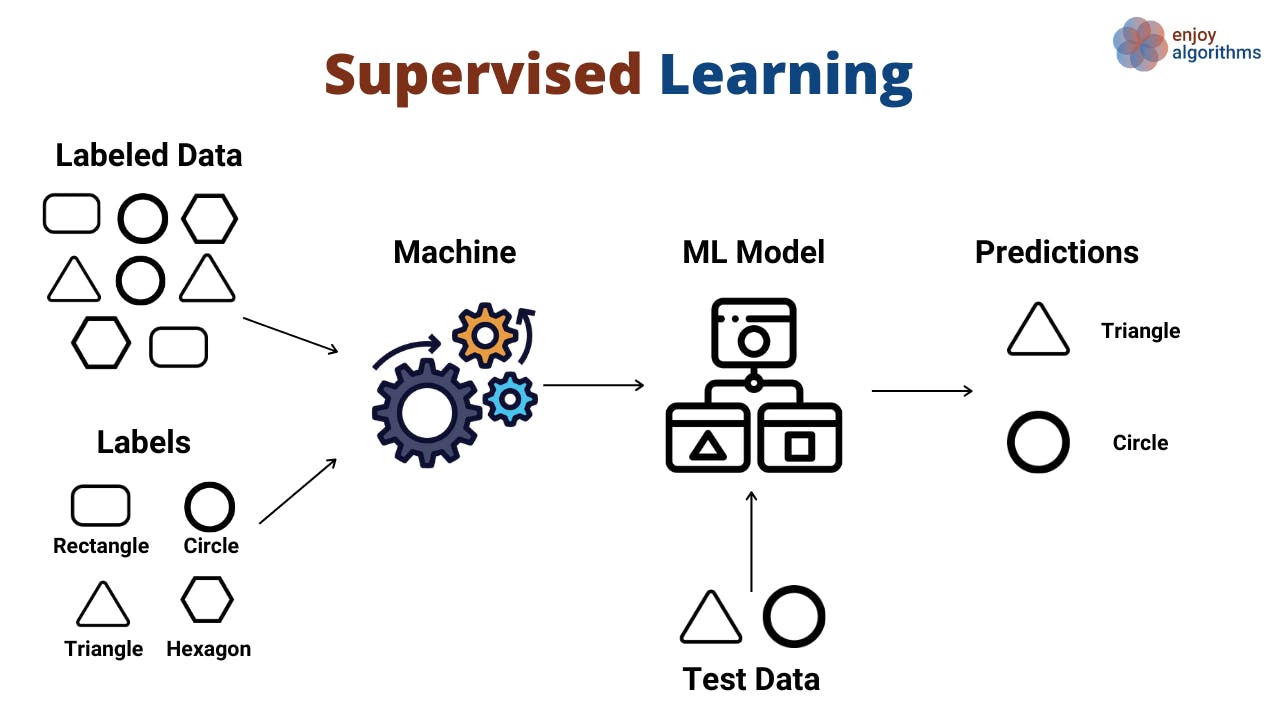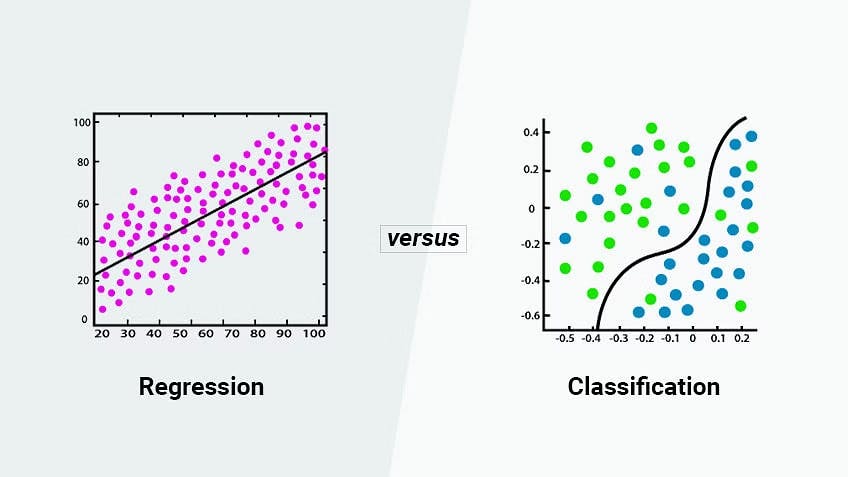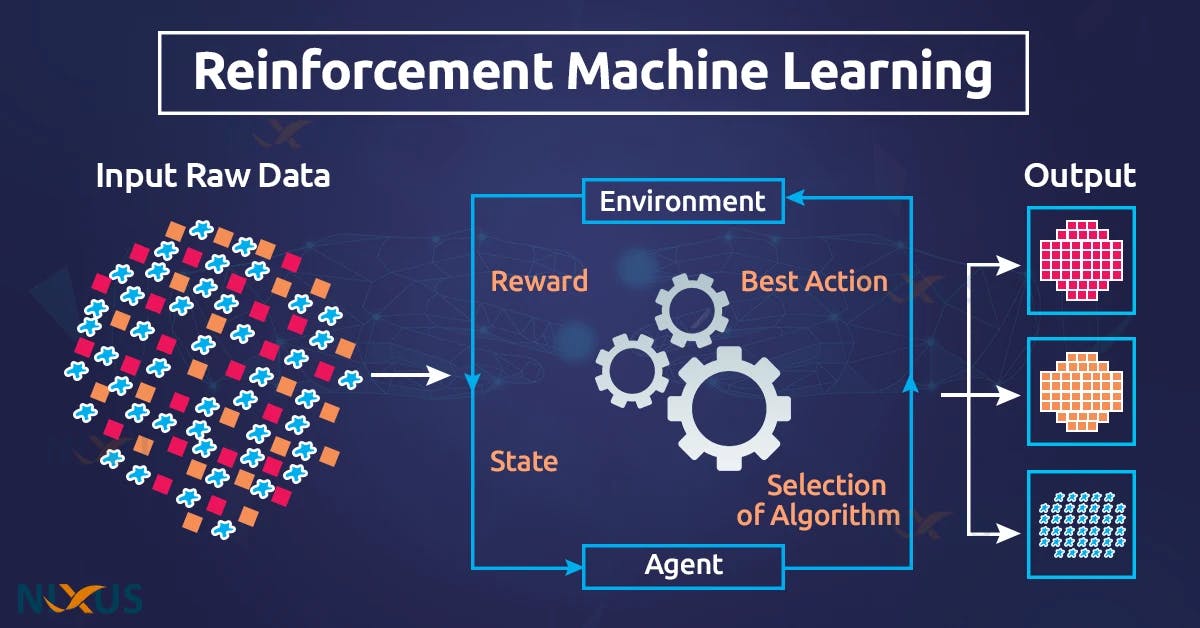In This Article series, I will cover what is Machine Learning. Explain all the Machine Learning Algorithms How it works how to make them from scratch and also how to implement them from Scikit Learn Library .
First part: Brief Intro to Machine Learning
First Let me give the book definition or Wikipedia definition:
Machine learning (ML) is a field of inquiry devoted to understanding and building methods that 'learn', that is, methods that leverage data to improve performance on some set of tasks.[1] It is seen as a part of artificial intelligence. Machine learning algorithms build a model based on sample data, known as training data, in order to make predictions or decisions without being explicitly programmed to do so.
this is the definition given in Wikipedia
Let me explain Machine Learning in Layman's term
The machine learns from Data that we give to it and it tries to understand the pattern from the data through machine learning algorithms which are created by researchers.
Is Machine learning Is AI?
No Machine Learning is not completely AI it is a Subset of AI where there are many subset like Deep Learning, Computer Vision, and Natural Language Processing (NLP) which together forms AI this image describes well

Types of Machine Learning :
There are majorly three types of Machine Learning but there is also another type:
- Supervised Machine Learning
- Unsupervised Machine Learning
- Semisupervised Machine Learning
- Reinforcement Machine Learning
Supervised Machine Learning :
In this type machine is trained with labeled data

Example : This is similar to teaching a small child, when first-time child sees a new thing they ask what is that? we label them again when the child sees the same thing they are able to recognize it correctly
Categories of Supervised Machine Learning:
Supervised machine learning can be classified into two types of problems, which are given below:
Classification Regression

Classification
Classification algorithms are used to solve classification problems in which the output variable is categorical, such as "Yes" or No, Male or Female, Red or Blue, etc. The classification algorithms predict the categories present in the dataset. Some real-world examples of classification algorithms are Spam Detection, Email filtering, etc.
Some popular classification algorithms are given below:
- Random Forest Algorithm
- Decision Tree Algorithm
- Logistic Regression Algorithm
- Support Vector Machine Algorithm
Regression
Regression algorithms are used to solve regression problems in which there is a linear relationship between input and output variables. These are used to predict continuous output variables, such as market trends, weather predictions, etc.
Some popular Regression algorithms are given below:
- Simple Linear Regression Algorithm
- Multivariate Regression Algorithm
- Decision Tree Algorithm
- Lasso Regression
Unsupervised Machine Learning:
In this Type, the Machine is trained with unlabeled data this type mainly involves grouping the data into different categories this image describes well.

Example: Grouping customers by purchasing behavior
Unsupervised Learning can be further classified into two types, which are given below:
- Clustering
Association
Clustering
The clustering technique is used when we want to find the inherent groups from the data. It is a way to group the objects into a cluster such that the objects with the most similarities remain in one group and have fewer or no similarities with the objects of other groups.
Some of the popular clustering algorithms are given below:
K-Means Clustering algorithm Mean-shift algorithm DBSCAN Algorithm Principal Component Analysis Independent Component Analysis
Association
Association rule learning is an unsupervised learning technique, which finds interesting relations among variables within a large dataset. The main aim of this learning algorithm is to find the dependency of one data item on another data item and map those variables accordingly so that it can generate maximum profit. This algorithm is mainly applied in Market Basket analysis, Web usage mining, continuous production, etc.
Some popular algorithms of Association rule learning are Apriori Algorithm, Eclat, FP-growth algorithm.
Semisupervised Machine Learning:
In this type, some of the data are Labeled and some are unlabeled. This is the combination of both Supervised and Unsupervised Learning.The main aim of semi-supervised learning is to effectively use all the available data, rather than only labeled data like in supervised learning.
Reinforcement Machine Learning
This is also called reward-based learning where machines get a reward for every good action and get punished for every bad action hence the goal of a reinforcement learning agent is to maximize the rewards. In this type of Machine learns from experience

Example : You all heard the news that In chess AI beats the Grandmaster this is a perfect example of Reinforcement Machine Learning where the machine is trained with reward-based system.
Categories of Reinforcement Learning
Reinforcement learning is categorized mainly into two types of methods/algorithms:
Positive Reinforcement Learning:
Positive reinforcement learning specifies increasing the tendency that the required behaviour would occur again by adding something. It enhances the strength of the behaviour of the agent and positively impacts it.
Negative Reinforcement Learning:
Negative reinforcement learning works exactly the opposite to positive RL. It increases the tendency that the specific behaviour would occur again by avoiding the negative condition.
In the Next Article, we can explore the important supervised machine Learning algorithm Linear Regression.. Happy Learning.

